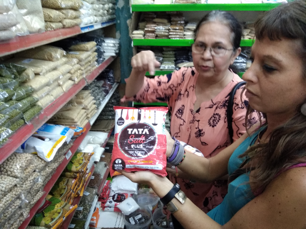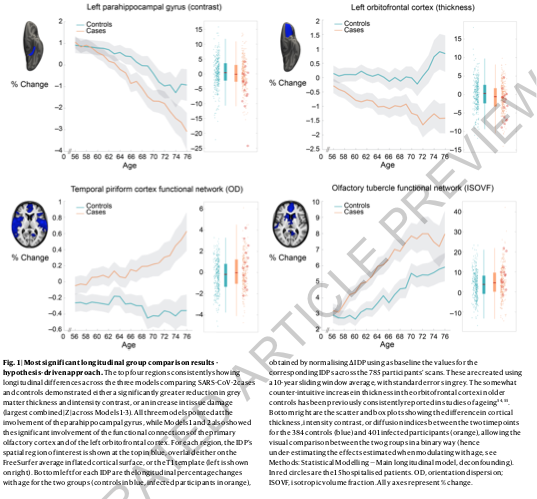
Is it possible to easily identify people who wield influence within online or offline social networks, by virtue of how they are connected, without actually mapping networks? Do large-scale field experiments show how to use this to change behavior of whole populations? Yes! 1/
This week, our lab #HNL published new work in @PNASnews on “network targeting algorithms” to identify “structurally influential” people within social networks, in order to accelerate behavior change at scale.
We can artificially create tipping points.
pnas.org/doi/full/10.10… 2/
We can artificially create tipping points.
pnas.org/doi/full/10.10… 2/
To change the behavior of whole populations, we take advantage of the “friendship paradox,” which is the mathematical fact that, on average, your friends have more friends than you do. 3/
(Also, your sexual partners have more sexual partners than you do. And – most depressing perhaps for academics – your co-authors have more co-authors than you do.) 4/
This #FriendshipParadox fact was first noted by Scott Feld in this 1991 AJS paper: jstor.org/stable/2781907…. And here is another fine early (2003) application: journals.aps.org/prl/abstract/1… 5/
My #HNL lab has exploited this idea in numerous ways. At first, we used it to predict epidemics in advance -- whether of germs (in 2010) journals.plos.org/plosone/articl… or of information (e.g., @twitter hashtags) (in 2014) journals.plos.org/plosone/articl… | @PLOSONE 6/
Here is a 2010 @TEDTalks on “How Social Networks Predict Epidemics” that explains how one can identify and monitor central people in networks so that they might function like a canary in a coal mine -- providing advance warning of incoming epidemics: ted.com/talks/nicholas… 7/
But we at #HNL have also exploited the #FriendshipParadox to *intervene* in networks to facilitate the diffusion of desirable public health knowledge, attitudes, and behaviors around the world (in Uganda, Honduras, and India, and online). 8/
Prior work in Honduras included this 2015 paper in @TheLancet thelancet.com/pdfs/journals/… and this ongoing study for which we hope to publish final RCT results soon (trial design in @BMJ_Open) bmjopen.bmj.com/content/7/3/e0… 9/ 



The idea behind network targeting is that if you target a small set of *structurally influential* individuals within a population (such as a village – but it could be any organization or group), you can accelerate and/or increase adoption, by shifting adoption curve to left: 10/ 

In new @PNASNews study, @MQDicer, L Forastiere, & S Gupta test a novel “pair targeting” algorithm, to shift adoption curve even further. Samples of randomly chosen ppl & one of their randomly chosen friends were together given a health intervention. pnas.org/doi/full/10.10… 11/ 

And we measured whether such network targeting of pairs of individuals could not only enhance response to treatment among the treated, but also enhance the response to treatment among the untreated. 12/
Did *everyone else* in a community gain knowledge or adopt a practice when specific people in their community were chosen to get an intervention using particular network targeting algorithms? Yes, indeed, we created artificial tipping points. pnas.org/doi/full/10.10… @PNASNews 13/
In 50 chawls (residential buildings) in Mumbai, we mapped the networks of the 2,491 female head-of-households in order to try to enhance the adoption of iron-fortified salt to reduce neonatal and maternal anemia. 14/ 

Anemia is a serious global health challenge. Prevention of anemia in child-bearing women is key to preventing low birth weight and perinatal and maternal mortality. Iron-deficiency anemia remains a key public health problem in India, with 53% of women affected. 15/
And we found we could substantially increase adoption of iron-fortified salt to counteract anemia. Compared to random targeting, friendship-nomination targeting & pair-targeting both enhanced adoption of iron-fortified salt in this population in India. pnas.org/doi/full/10.10… 17/ 

This new pair-targeting algorithm (in which structurally influential individuals are identified) is easy to implement and readily acceptable to populations and it enhances the adoption of new practices in global health settings. 18/ 

For a prior thread (from March 5, 2015) on the relevance of the #FriendshipParadox to forecasting the course of epidemics, including respiratory epidemics like flu of COVID, see:
https://twitter.com/NAChristakis/status/1235566497591742464?s=20&t=ztjnD_xi5VFK474l1MtFWw19/
In this new research in India, we mapped the social networks of these communities (though it would not be necessary to do this in the future) using our publicly released software, #TRELLIS, available at trellis.yale.edu. More about it here: pubmed.ncbi.nlm.nih.gov/34219904/ 20/ 



I meant March 5, 2020. Wish twitter had an edit button.
• • •
Missing some Tweet in this thread? You can try to
force a refresh








